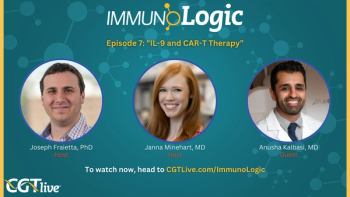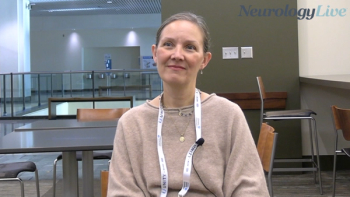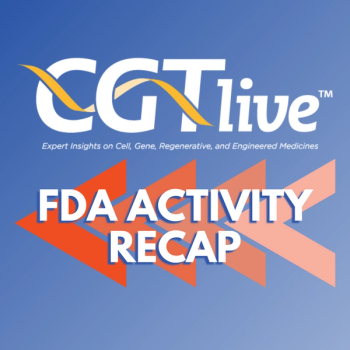
HDAC Inhibitors in Cancer Care
The epigenetic control of gene expression has been shown to play an important role in cancer initiation, progression, and resistance. Thus, agents that modify the epigenetic environment of tumors will likely be an important addition to the anticancer arsenal. Specifically, there is much interest in modulating histone acetylation using a new class of drugs, histone deacetylase (HDAC) inhibitors. Preclinical data have demonstrated the efficacy of various HDAC inhibitors as anticancer agents, with the greatest effects shown when HDAC inhibitors are used in combination with other therapies. As a result of encouraging preclinical data, numerous HDAC inhibitors are being investigated in clinical trials either as monotherapies or in conjunction with other treatments such as chemotherapy, biologic therapy, or radiation therapy. In fact, vorinostat and depsipeptide, two actively studied HDAC inhibitors, were recently approved for the treatment of refractory cutaneous T-cell lymphoma. Although the use of HDAC inhibitors has generated great enthusiasm, a significant amount of work still needs to be done in order to understand their mechanisms of action, as well as to determine the appropriate patient characteristics and subsets of cancer for which HDAC inhibitors hold the most potential for effective treatment.
The epigenetic control of gene expression has been shown to play an important role in cancer initiation, progression, and resistance. Thus, agents that modify the epigenetic environment of tumors will likely be an important addition to the anticancer arsenal. Specifically, there is much interest in modulating histone acetylation using a new class of drugs, histone deacetylase (HDAC) inhibitors. Preclinical data have demonstrated the efficacy of various HDAC inhibitors as anticancer agents, with the greatest effects shown when HDAC inhibitors are used in combination with other therapies. As a result of encouraging preclinical data, numerous HDAC inhibitors are being investigated in clinical trials either as monotherapies or in conjunction with other treatments such as chemotherapy, biologic therapy, or radiation therapy. In fact, vorinostat and depsipeptide, two actively studied HDAC inhibitors, were recently approved for the treatment of refractory cutaneous T-cell lymphoma. Although the use of HDAC inhibitors has generated great enthusiasm, a significant amount of work still needs to be done in order to understand their mechanisms of action, as well as to determine the appropriate patient characteristics and subsets of cancer for which HDAC inhibitors hold the most potential for effective treatment.
The term epigenetics refers to changes in genetic expression and cellular phenotype without alterations in the DNA sequence itself. Alterations in the cellular epigenetic environment, and not only primary genetic mutations, play an important role in tumor formation, progression, and resistance to treatment. One of the critical epigenetic events in oncology is related to aberrant histone modifications.[1] In normal cellular biology, histones play a key role in regulating chromatin structure and function. Post-translational modifications of histone proteins through acetylation, methylation, and phosphorylation determine how these histone proteins control chromatin remodeling.
More specifically, histone acetylation is regulated through the opposing actions of histone acetyltransferases (HATs) and histone deacetylases (HDACs), where HATs transfer acetyl moieties to lysine residues and HDACs remove these acetyl moieties. HAT activity relaxes chromatin, permitting various transcription factors to interact with DNA, thereby promoting transcription. In contrast, HDAC activity condenses chromatin, preventing access of transcription factors, leading to transcriptional repression.[2] HAT inactivity and HDAC overactivity have been associated with tumorigenesis.[3] Due to the fact that it is pharmacologically much simpler to inhibit an enzyme rather than to induce one, HDAC inhibition has gained enormous clinical interest as an anticancer strategy.
However, it is not only the histone targets that enable HAT and HDAC disturbances to lead to tumor development. HAT/HDACs are also able to acetylate or deacetylate numerous other nonhistone targets, such as proteins involved in cellular proliferation, migration, cell death, DNA repair, angiogenesis, inflammation, and the immune response,[4] all of which play roles in tumor formation and progression. Correspondingly, HDAC inhibitors have been shown to be effective therapeutic anticancer agents via multiple mechanisms, including inducing cell-cycle arrest, intrinsic and extrinsic apoptotic mechanisms, mitotic cell death, autophagic cell death, reactive oxygen species, inhibiting angiogenesis,[4] and improving NK cell–mediated tumor immunity.[5] These diverse effects on cancer cells make HDAC inhibitors attractive agents not only for monotherapy but also for combination therapy with other anticancer modalities. Although many combination strategies have been shown to be both effective and synergistic, the exact mechanism(s) for this synergy are poorly understood and likely different according to the combination regimen utilized.
TABLE 1
Examples of the Many Currently Active Clinical Trials Involving HDAC Inhibitors
As a result of promising preclinical data, various HDAC inhibitors are being tested in the clinic, as either monotherapeutic agents or as combination regimens for both solid and hematologic malignancies.[6]
In this review, we discuss the recent preclinical advances that demonstrate HDAC inhibitors as effective anticancer agents when utilized as monotherapy, as well as in combination with radiation. We also examine recent advances in assessing biomarkers for measuring HDAC inhibitor efficacy, as well as the search for effective predictive markers to help identify patients who are more likely to benefit from therapy. Finally, we review recent clinical trials involving HDAC inhibitors and the potential that they hold for cancer therapy, specifically in combination protocols with chemotherapy and radiation.
HDAC Inhibitors as Monotherapy
Multiple preclinical studies have demonstrated the effectiveness of HDAC inhibitors in hematologic malignancies as a single-modality agent. In particular, preclinical studies have shown that vorinostat (Zolinza) inhibited proliferation, and induced differentiation and apoptosis of cutaneous T-cell lymphoma (CTCL) cells.[7] These promising data eventually led to two successful phase II clinical trials demonstrating the effectiveness of vorinostat in relapsed or refractory CTCL.[8,9] As a result, vorinostat was approved by the US Food and Drug Administration (FDA) as the first HDAC inhibitor for cancer therapy, specifically for relapsed or refractory CTCL.
In addition, preclinical analysis of HDAC inhibitors has been shown to be efficacious in certain solid malignancies. As an example, one study demonstrated that the efficacy of valproic acid on inhibiting prostate cancer growth was related to effects such as the induction of senescence, apoptosis, and cell-cycle arrest, and inhibition of angiogenesis.[10] In general, however, HDAC inhibitors have been more efficacious in hematologic or lymphoid malignancies when used as monotherapies, and more effective for treating solid malignancies when included in combination regimens.
HDAC Inhibitors and Radiation Therapy
HDAC Inhibitors as Radiosensitizers
Accumulating evidence from preclinical studies has shown that multiple HDAC inhibitors from diverse chemical classes are effective radiosensitizers in a variety of malignancies.[11] For example, HDAC inhibitors have exhibited both in vitro and in vivo radiosensitizing effects in glioblastoma multiforme,[12] non–small-cell lung cancer,[13] colorectal cancer,[14] prostate cancer,[15] and metastatic breast cancer.[16]
The exact mechanism by which HDAC inhibitor–induced radiosensitization occurs is currently unknown, but may be due at least in part to the prevention of damaged DNA repair. HDAC inhibitors prevent DNA double-strand break (DSB) repair, as evidenced by prolonged expression of phosphorylated H2AX (γH2AX), a marker for DNA DSBs.[17] This retention of radiation-induced γH2AX foci has been shown in multiple studies, using numerous agents from different classes of HDAC inhibitors.[12,13,18-21] Thus, HDAC inhibitors appear to inhibit DNA DSB repair leading to enhanced tumor cell death. However, the mechanism for this impaired DNA DSB repair is not entirely clear. The mechanism does not appear to be related to the modulation of gene transcription, given that valproic acid can radiosensitize malignant cells when administered up to 24 hours postradiation.[22]
Understanding the precise mechanism of HDAC inhibitor–induced radiosensitization has clinical implications in the design of treatment protocols, as determining the schedule of drug administration may be critical for optimal tumor response. Initial preclinical protocols for the HDAC inhibitor MS-275 involved pretreating cells for 48 hours prior to irradiation in order to obtain maximal histone acetylation.[18] Cells were then washed, trypsinized, and placed in MS-275–free media prior to irradiation. This technique showed minimal to no enhancement of radiosensitivity as well as rapid loss of histone acetylation. However, pretreatment with MS-275 and exposure to the drug following irradiation significantly enhanced the radiosensitivity of cancer cells.[18] Similar results regarding the timing of HDAC inhibitor therapy were observed with a diverse group of HDAC inhibitors, including valproic acid, vorinostat, CI-994, and depsipeptide (romidepsin, Istodax), whereby cells exposed to drug both pre- and postradiation, had a maximal radiosensitizing effect.[12,23]
Interestingly, MS-275 and valproic acid have also been studied when administered only postradiation, though with differing results. MS-275 displayed minimal radiosensitization when given postradiation,[18] whereas valproic acid effectively radiosensitized cells when administered up to 24 hours following radiation treatment. However, this drug schedule did not show the same enhancement as when cells received both pre- and postradiation drug treatment.[22] Taken together, these studies suggest the importance of maintaining sufficiently high HDAC inhibitor levels when undergoing radiation, in order to ensure optimal radiosenstization and tumor response.
HDAC Inhibitors and Normal Tissue Radioresponse
To maximize the therapeutic ratio of a drug in combination with radiation, it is important that the drug does not enhance the killing effect of radiation on normal cells. One of the major advantages of HDAC inhibitors as radiosensitizing agents for cancer therapy is the fact that they are relatively specific for malignant cells, sparing toxicity to normal tissues. Several in vitro studies have demonstrated this finding of no increased radiosensitivity in normal tissue cell lines when exposed to HDAC inhibitors.[21,24] Correspondingly, initial data from a phase II trial involving valproic acid, temozolomide (Temodar), and radiation for the treatment of glioblastoma multiforme did not show significantly increased toxicity compared to what is reported for radiation and temozolomide alone.[25] In fact, the most significant side effects were drug-related neurologic toxicities, which were reversible within 72 hours after the cessation of valproic acid. Although the mechanism of tumor selectivity in HDAC inhibitor–enhanced radiosensitivity is currently unknown, aberrant tumor cell HDAC activity may play an important role.
Not only are HDAC inhibitors apparently nontoxic to normal cells, but they may actually play a role in protection of normal tissue from radiation-induced side effects. The HDAC inhibitor phenylbutyrate has been shown to improve both DNA repair and cell survival in normal fibroblast cell lines.[24] In addition, two studies have demonstrated that topical treatment with HDAC inhibitors offers normal tissue protection from the acute and long-term effects of radiation.[24,26]
Specifically, the first study showed that the HDAC inhibitors phenylbutyrate, trichostatin A, and valproic acid offered protection against cutaneus radiation syndrome, long-term skin fibrosis and radiation-induced malignancies in mice.[26] These observations were correlated with the inhibition of the pro-inflammatory cytokines tumor necrosis factor (TNF)-α and transforming growth factor (TGF)-β, which may be one of the mechanisms by which HDAC inhibitors provide radioprotection of normal tissue.[26] Similarly, the second study demonstrated (in mice) that topical phenylbutyrate effectively reduced the severity of radiation-induced oral mucositis, a common and morbid side effect of radiotherapy treatment for head and neck cancers.[24] These findings were also correlated with a decrease in expression of the pro-inflammatory cytokine TNF-α.[24] Potentially alleviating the incidence and severity of radiation-induced normal tissue toxicity has tremendous clinical implications in the treatment of numerous cancers.
In addition, recent preclinical studies of HDAC inhibitors given with total-body irradiation (TBI) to mice, revealed a decrease in mortality and an increase in bone marrow stem cell expansion.[27] This study was based on earlier data showing that HDAC inhibitors stimulate bone marrow proliferation.[28,29] These results raise the possibility that HDAC inhibitors may not only be effective in protecting the acute and potentially fatal side effects of TBI, but they may also play a role in mitigating the effects of myleosuppression associated with many chemotherapy and radiation regimens. Although the data are promising, it remains difficult to reconcile a proliferation of the bone marrow with the observed toxicities of myelosuppresion from clinical studies involving HDAC inhibitors.[30] In general, these studies represent some of the potential benefits of HDAC inhibitors, in terms of mitigating the toxicity of radiation, while also enhancing its antitumor activity.
Biomarkers and HDAC Inhibitors
As is important when discussing any pharmaceutical agent, it is necessary to identify how to measure drug delivery and activity as well as to determine which patients may benefit from such therapy. One of the most common methods of measuring the activity of HDAC inhibitors is to test for histone 3 and histone 4 hyperacetylation, given that an accumulation of acetylated histones is a direct downstream consequence of HDAC inhibition. Although the most direct method of testing for tumor hyperacetylation is via tumor biopsy, such a procedure is too invasive to consistently use for determining drug activity in the clinical setting. As a result, researchers have investigated the use of peripheral lymphocytes as surrogate markers for global acetylation after HDAC inhibitor treatment. Testing peripheral lymphocyte hyperacetylation is a potential strategy for optimizing protocols that involve HDAC inhibitor and radiation therapies.[15] Data from the many current clinical trials will hopefully offer further insight into the correlation between histone acetylation and tumor response to both monotherapies and combination therapies.
It is particularly important to find biomarkers with which to identify patients who are likely to benefit when studying HDAC inhibitors in clinical trials. If only a small subset of patients will benefit from therapy, the success of these responders may be lost in the statistics of the larger trial. Interestingly, HR23B, a protein that transports ubiquitinated cargo to proteasomes, was identified as a marker for the sensitivity of HDAC inhibitor–induced apoptosis in hematologic malignancies. Normally, HDACs inhibit the action of HR23B, leading to stable proteasome activity. However, in the presence of HDAC inhibitors, there is no inhibition of HR23B and the proteasome becomes overloaded, leading to apoptosis.[31]
Further evidence in support of the utility of HR23B as a useful biomarker in hematologic cancers stems from the observation that it is expressed in high levels in the majority of patients with CTCL, a malignancy that is particularly sensitive to HDAC inhibitors.[31] Unlike HR23B in hematologic cancers, to date there are no good biomarkers of HDAC inhibition and an enhancement of radiation therapy in patients. However, as we better understand how HDAC inhibitors enhance tumor cell radiosensitivity, we can utilize this knowledge to search for molecular biomarkers of enhanced radiosensitivity.
Clinical Protocols and HDAC Inhibitors
TABLE 2
Current Clinical Trials Involving Radiation and HDAC Inhibitors
In 2006, vorinostat became the first HDAC inhibitor to be approved by the FDA for cancer therapy, specifically for the use of refractory CTCL.[8,9] Recently, depsipeptide was approved as the only additional HDAC inhibitor for refractory CTCL.[32] Even though CTCL is the only cancer for which any HDAC inhibitors are currently FDA-approved, many clinical trials are assessing the efficacy and safety of other HDAC inhibitors, when used alone or in combination therapies, in both solid and hematologic malignancies. Particularly within recent years, many clinical trials have begun to examine the combination of HDAC inhibitors with radiation for various malignancies (
Recent reports from phase II data on HDAC inhibitors as monotherapies for various solid malignancies demonstrate that they are well tolerated with good toxicity profiles compared to current standard cancer therapies. In general, the side effects of HDAC inhibitors are reversible with drug cessation and primarily include fatigue, nausea, dehydration, diarrhea, prolonged QT, thrombocytopenia, lymphopenia, and neutropenia.[30] When used as monotherapies in solid cancers, HDAC inhibitors did not tend to significantly improve results compared to current standard therapies.[33-37] However, these results should not detract from the excitement about HDAC inhibitors as an anticancer class of drugs. Most preclinical studies, particularly in solid malignancies, have observed a cytostatic response to HDAC inhibitors when used as monotherapies, but when combined with radiation, chemotherapy, or other targeted agents, these drugs produce a more powerful cytotoxic response.
Reference Guide
Therapeutic Agents
Mentioned in This Article
CI-994
Depsipeptide (romidepsin, Istodax)
Hydralazine
MS-275
Phenylbutyrate (Buphenyl)
Temozolomide (Temodar)
Trichostatin A
Valproic acid
Vorinostat (Zolinza)
Brand names are listed in parentheses only if a drug is not available generically and is marketed as no more than two trademarked or registered products. More familiar alternative generic designations may also be included parenthetically.
For example, a phase II clinical trial utilizing valproic acid, hydralazine (a demethylating agent), and different chemotherapies for various solid malignancies refractory to chemotherapy showed a more promising result.[38] In this study, the investigators noted an 80% clinical response, with either a partial response or stable disease. Although the toxicity profile was not negligible-consisting of a significant amount of grade 4 hematologic toxicity-these patients were heavily pretreated with prior chemotherapy. What is more promising about this study was the utility in all of the cancers studied (ovarian, cervical, breast, testicular, and lung), demonstrating that combining HDAC inhibitors with other therapies may be clinically useful in multiple types of malignancies.[38]
With the 13 active clinical trials combining HDAC inhibitors and ionizing radiation, in addition to the many trials involving HDAC inhibitors and chemotherapy or biologic agents, the next few years will be revealing for the efficacy and safety of HDAC inhibitors as anticancer agents. These clinical trials, in conjunction with new insights from basic scientific research, will help elucidate which treatment combinations and dosing regimens are optimal for various types of cancers, in the context of varied patient characteristics and biomarker profiles.
Financial Disclosure:The authors have no significant financial interest or other relationship with the manufacturers of any products or providers of any service mentioned in this article.
Acknowledgments:This research was supported in part by the Intramural Research Program of the National Institutes of Health, National Cancer Institute.
References:
References
1. Jones PA, Baylin SB: The epigenomics of cancer. Cell 128:683-692, 2007.
2. Thiagalingam S, Cheng KH, Lee HJ, et al: Histone deacetylases: Unique players in shaping the epigenetic histone code. Ann N Y Acad Sci 983:84-100, 203.
3. Marks PA, Richon VM, Miller T, et al: Histone deacetylase inhibitors. Adv Cancer Res 91:137-168, 2004.
4. Marks PA, Xu WS: Histone deacetylase inhibitors: Potential in cancer therapy. J Cell Biochem 107:600-608, 2009.
5. López-Soto A, Folgueras AR, Seto E, et al: HDAC3 represses the expression of NKG2D ligands ULBPs in epithelial tumour cells: Potential implications for the immunosurveillance of cancer. Oncogene 28:2370-2382, 2009.
6. Available at www.clinicaltrials.gov. Accessed Jan 12, 2010.
7. Zhang C, Richon V, Ni X, et al: Selective induction of apoptosis by histone deacetylase inhibitor SAHA in cutaneous T-cell lymphoma cells: Relevance to mechanism of therapeutic action. J Invest Dermatol 125:1045-1052, 2005.
8. Olsen EA, Kim YH, Kuzel TM, et al: Phase IIB multicenter trial of vorinostat in patients with persistent, progressive, or treatment refractory cutaneous T-cell lymphoma. J Clin Oncol 25:3109-3115, 2007.
9. Duvic M, Talpur R, Ni X, et al: Phase 2 trial of oral vorinostat (suberoylanilide hydroxamic acid, SAHA) for refractory cutaneous T-cell lymphoma (CTCL). Blood 109:31-39, 2007.
10. Shabbeer S, Kortenhorst MS, Kachhap S, et al: Multiple Molecular pathways explain the anti-proliferative effect of valproic acid on prostate cancer cells in vitro and in vivo. Prostate 67:1099-1110, 2007.
11. Camphausen K, Tofilon PJ: Inhibition of histone deacetylation: A strategy for tumor radiosensitization. J Clin Oncol 25:4051-4056, 2007.
12. Camphausen K, Cerna D, Scott T, et al: Enhancement of in vitro and in vivo tumor cell radiosensitivity by valproic acid. Int J Cancer 114:380-386, 2005.
13. Geng L, Cuneo KC, Fu A, et al: Histone deacetylase (HDAC) inhibitor LBH589 increases duration of gamma-H2AX foci and confines HDAC4 to the cytoplasm in irradiated non-small cell lung cancer. Cancer Res 66:11298-11304, 2006.
14. Folkvord S, Ree AH, Furre T, et al: Radiosensitization by SAHA in experimental colorectal carcinoma models-in vivo effects and relevance of histone acetylation status. Int J Radiat Oncol Biol Phys 74:546-552, 2009.
15. Camphausen K, Scott T, Sproull M, et al: Enhancement of xenograft tumor radiosensitivity by the histone deacetylase inhibitor MS-275 and correlation with histone hyperacetylation. Clin Cancer Res 10:6066-6071, 2004.
16. Baschnagel A, Russo A, Burgan WE, et al: Vorinostat enhances the radiosensitivity of a breast cancer brain metastatic cell line grown in vitro and as intracranial xenografts. Mol Cancer Ther 8:1589-1595, 2009.
17. Rogakou EP, Pilch DR, Orr AH, et al: DNA double-stranded breaks induce histone H2AX phosphorylation on serine 139. J Biol Chem 273:5858-5868, 1998.
18. Camphausen K, Burgan W, Cerra M, et al: Enhanced radiation-induced cell killing and prolongation of gammaH2AX foci expression by the histone deacetylase inhibitor MS-275. Cancer Res 64:316-321, 2004.
19. Munshi A, Tanaka T, Hobbs ML, et al: Vorinostat, a histone deacetylase inhibitor, enhances the response of human tumor cells to ionizing radiation through prolongation of gamma-H2AX foci. Mol Cancer Ther 5:1967-1974, 2006.
20. Zhang Y, Adachi M, Zhao X, et al: Histone deacetylase inhibitors FK228, N-(2-aminophenyl)-4-[N-(pyridin-3-yl-methoxycar-
bonyl)amino-methyl]benzamide and m-carboxycinnamic acid bis-hydroxamide augment radiation-induced cell death in gastrointestinal adenocarcinoma cells. Int J Cancer 110:301-308, 2004.
21. Munshi A, Kurland JF, Nishikawa T, et al: Histone deacetylase inhibitors radiosensitize human melanoma cells by suppressing DNA repair activity. Clin Cancer Res 11:4912-4922, 2005.
22. Chinnaiyan P, Cerna D, Burgan WE, et al: Postradiation sensitization of the histone deacetylase inhibitor valproic acid. Clin Cancer Res 14:5410-5415, 2008.
23. Cerna D, Camphausen K, Tofilon PJ: Histone deacetylation as a target for radiosensitization. Curr Top Dev Biol 73:173-204, 2006.
24. Chung YL, Lee MY, Pui NN: Epigenetic therapy using the histone deacetylase inhibitor for increasing therapeutic gain in oral cancer: Prevention of radiation-induced oral mucositis and inhibition of chemical-induced oral carcinogenesis. Carcinogenesis 30:1387-1397, 2009.
25. Kamrava M, Citrin D, Sproull M, et al: Acute toxicity in a phase II clinical trial of valproic acid in combination with temodar and radiation therapy in patients with glioblastoma multiforme (abstract 2094). Int J Radiat Oncol Biol Phys 72(suppl):S211, Sept 2008.
26. Chung YL, Wang AJ, Yao LF: Antitumor histone deacetylase inhibitors suppress cutaneous radiation syndrome: Implications for increasing therapeutic gain in cancer radiotherapy. Mol Cancer Ther 3:317-325, 2004.
27. Brown SL, Kolozsvary A, Liu J, et al: Histone deacetylase inhibitors protect against and mitigate the lethality of total-body irradiation in mice. Radiat Res 169:474-478, 2008.
28. Young JC, Wu S, Hansteen G, et al: Inhibitors of histone deacetylase promote hematopoietic stem cells renewal. Cytotherapy 6:328-336, 2004.
29. De Felice L, Tatarelli C, Mascolo MG, et al: Histone deacetylase inhibitor valproic acid enhances the cytokine-induced expansion of human hematopoietic stem cells. Cancer Res 65:1505-1513, 2005.
30. Rasheed W, Bishton M, Johnstone RW, et al: Histone deacetylase inhibitors in lymphoma and solid malignancies. Expert Rev Anticancer Ther 8:413-432, 2008.
31. Fotheringham S, Epping MT, Stimson L, et al: Genome-wide loss-of-function screen reveals an important role for the proteasome in HDAC inhibitor-induced apoptosis. Cancer Cell 15:57-66, 2009.
32. Piekarz RL, Frye R, Turner M, et al: Phase II multi-institutional trial of the histone deacetylase inhibitor romidepsin as monotherapy for patients with cutaneous T-cell lymphoma. J Clin Oncol 27:5410-5417, 2009.
33. Luu TH, Morgan RJ, Leong L, et al: A phase II trial of vorinostat (suberoylanilide hydroxamic acid) in metastatic breast cancer: A California Cancer Consortium study. Clin Cancer Res 14:7138-7142, 2008.
34. Modesitt SC, Sill M, Hoffman JS, et al: A phase II study of vorinostat in the treatment of persistent or recurrent epithelial ovarian or primary peritoneal carcinoma: A Gynecologic Oncology Group study. Gynecol Oncol 109:182-186, 2008.
35. Blumenschein GR Jr, Kies MS, Papadimitrakopoulou VA, et al: Phase II trial of the histone deacetylase inhibitor vorinostat (Zolinza, suberoylanilide hydroxamic acid, SAHA) in patients with recurrent and/or metastatic head and neck cancer. Invest New Drugs 26:81-87, 2008.
36. Galanis E, Jaeckle KA, Maurer MJ, et al: Phase II trial of vorinostat in recurrent glioblastoma multiforme: A North Central Cancer Treatment Group study. J Clin Oncol 27:2052-2058, 2009.
37. Traynor AM, Dubey S, Eickhoff JC, et al: Vorinostat (NSC# 701852) in patients with relapsed non-small cell lung cancer: A Wisconsin Oncology Network phase II study. J Thorac Oncol 4:522-526, 2009.
38. Candelaria M, Gallardo-Rincón D, Arce C, et al: A phase II study of epigenetic therapy with hydralazine and magnesium valproate to overcome chemotherapy resistance in refractory solid tumors. Ann Oncol 18:1529-1538, 2007.
Newsletter
Stay at the forefront of cutting-edge science with CGT—your direct line to expert insights, breakthrough data, and real-time coverage of the latest advancements in cell and gene therapy.











































